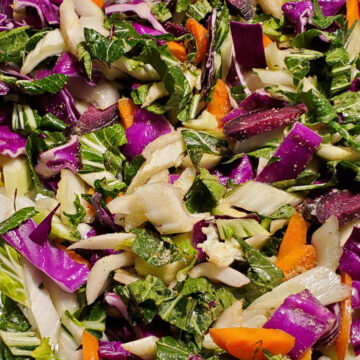
Mother Earth gifts us every autumn with produce to heal seasonal illnesses and balance us with our natural environments.
Mother Earth News | November 5, 2020 | By Amanda Nicklaus
Now that we are post-autumnal equinox, mid-October, between a Harvest and Blue Moon, it is easy to notice the way the Earth is changing. The temperature has dropped, the leaves are dressing the trees in oranges and reds, the sky is becoming more overcast. A change of seasons makes it easier for us to have more heightened awareness than usual, and after the busyness of summer —even a slower than usual pandemic summer — autumn offers us the chance to reflect on the year and prepare for the long cold months ahead.
Winter often brings illness and negatively-associated emotions. Thankfully, Mother Earth gifts us every autumn with produce to heal seasonal illnesses and balance us with our natural environments. We’re all aware that apples and pumpkins are in season now, as well as a variety of root vegetables. The Earth gives us exactly what we need; each of these foods holds medicinal and spiritual properties that align with the cooler seasons and bring us into balance.
Here are a few offerings from the earth that can heal and balance us this autumn:
Apples
Going apple picking at an orchard is a popular autumn activity, and while baking pies is a great way to enjoy this fall fruit, there are many reasons to make them a regular part of your diet. Apples are loaded with fiber and antioxidants and are a great source of vitamin C, which boosts immunity and keeps skin healthy. Apples also contribute to bone health and are anti-inflammatory. But this popular autumn fruit does more than just help your body fight off colds; as a symbol of love, health, wisdom, and abundance, you can use apples in your autumn and moon rituals to remind you of these qualities. And since apples have a red skin, you can use them to help balance your root chakra, helping you stay grounded through the long winter.
Beets
People either love beets or have never had them cooked right, and there are plenty of reasons to cook them until you love them. Beets have a variety of nutrients, such as fiber, iron, manganese, and vitamins B2, A, K, and C. They regulate blood flow, which is important when it starts to get cold and we lean toward a more sedentary lifestyle. Beets keep the heart and liver healthy, and they also aid digestion. The strong earthy taste of beets is a reminder that this root vegetable offers grounding qualities, and understandably, are another great food for balancing your root chakra. These deep red veggies also have a long history of being associated with passion, love, and beauty, so when the autumn and winter months begin to feel dreary, cook up a batch of beets to heighten your awareness of these necessary characteristics.
Carrots
Everybody has heard that carrots are good for your eyes, but this autumn root vegetable has much more to offer than good vision. Carrots are chock-full of vitamins A, K, B6, and C, which contribute to skin and brain health; they also contain potassium, fiber, and biotin. Carrots historically have been used to promote healthy pregnancies and ease cramps, which is hardly surprising. Orange foods balance the sacral chakra, which regulates creative and sexual flow, so if winter leaves you feeling empty and uninspired, add this vegetable into your diet!
Garlic
When you sense a cold and flu coming on, you might not think to reach for garlic, but there are plenty of reasons why you should! Garlic is used in both eastern and western medicine to prevent infection and influenza. Another vegetable containing Vitamin C and manganese, it is useful for detoxification and anti-inflammatory purposes. Maybe this is why garlic has developed a reputation for being used for protection, purification, and even exorcism. Keep lots of garlic around your home this autumn and winter (and not just for its healing properties; it also makes everything taste better!).
Pumpkins
We know we can carve pumpkins and bake them into pies, but what is lesser known is that this popular autumn food, like its orange carrot friends, is great for skin and eye health. Pumpkins contain vitamins A, B, C, and E, copper, potassium, fiber, and antioxidants. There are plenty of healthy savory ways to cook pumpkins—soups, curries, even pizzas—so don’t feel limited to pumpkin sweets, whose sugar content can weaken your immune system.
And this orange food is good for (you guessed it!) balancing your sacral chakra. Pumpkins symbolize abundance, generosity, home, and creativity, so decorating with them and increasing the intake of them in your diet does more than make it feel like fall; these autumn fruits can increase your sense of gratitude, which is key for maintaining mental and spiritual health, especially in autumn, when nature begins to minimalize its liveliness.
Winter has many beautiful aspects, but often these get lost in the negative qualities and the slow quality of time. To survive winter, we must be grounded, connected with our surroundings, aware of the very elements we endure. It makes sense, then, that we must eat more vegetables that grow directly in the ground, or ripen on the ground, foods that are red and orange, aligning with the chakras that keep our sense of groundedness and adaptability balanced. And it should come as no surprise that these vegetables and fruits contain the very nutrients we need to fight off winter illnesses and keep cold weather ailments, like dry skin, at bay.
There is no one way to maintain physical and spiritual health; each of us must tend to our own personal bodies, minds, and souls. Using foods that heal in universally similar ways, we can guide ourselves through the difficult, beautiful seasons. Mother Earth has given us all we need; it is up to us to receive and use what we have to heal ourselves and each other.
Amanda Nicklaus is a writer and aspiring urban homesteader based in Minneapolis. She spends her free time trying new recipes, going to farmers markets, and writing about everything she learns. Read all of Amanda’s MOTHER EARTH NEWS posts here.
All MOTHER EARTH NEWS community bloggers have agreed to follow our Blogging Guidelines, and they are responsible for the accuracy of their posts.





